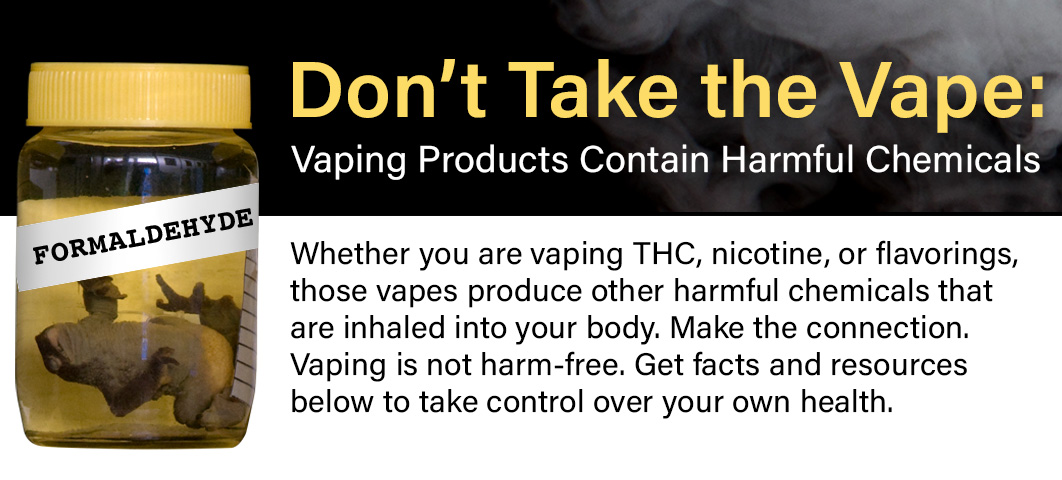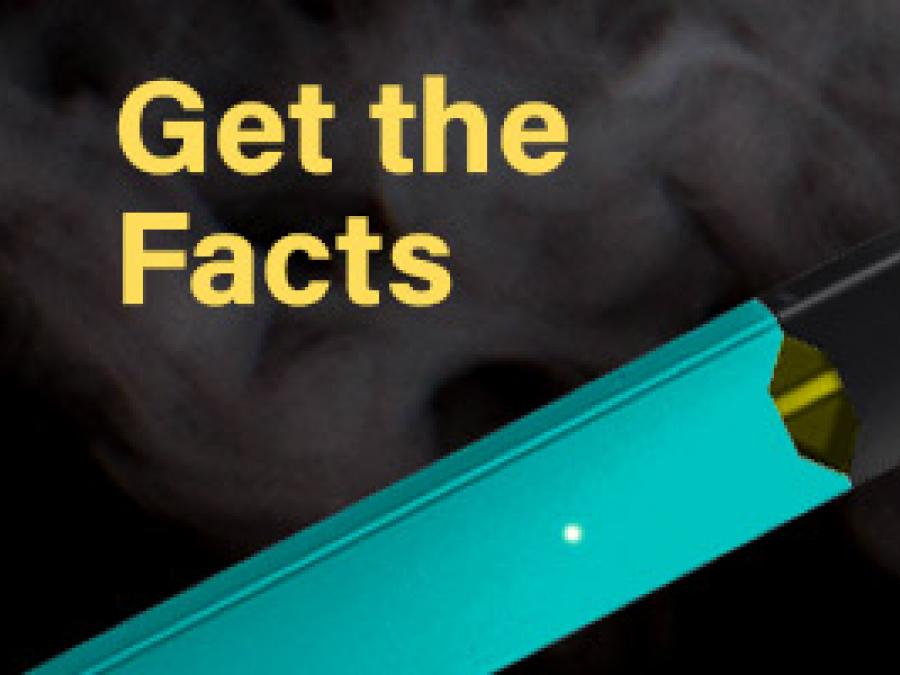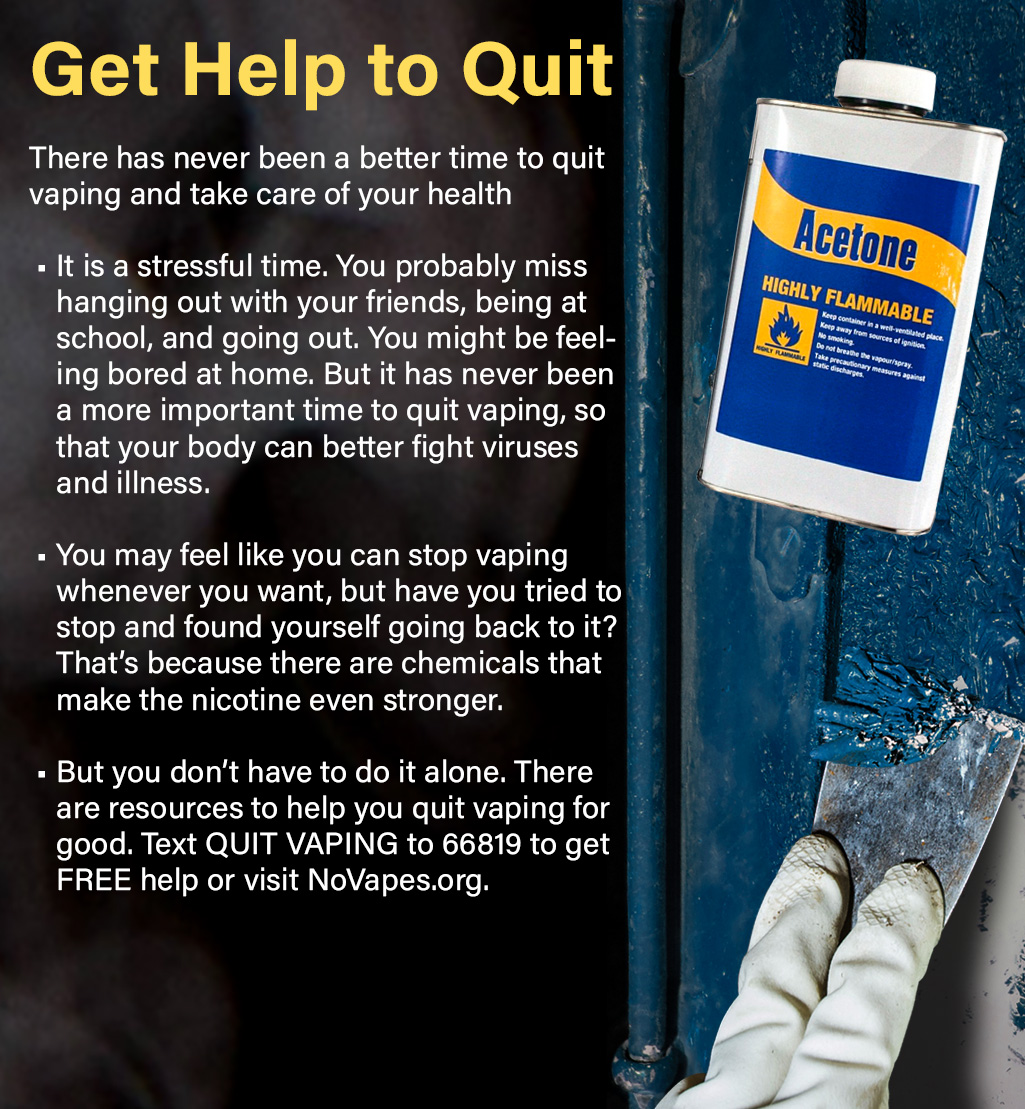Don't Take the Vape
Protect Your Lungs - Vaping & COVID-19
Teens who smoke or vape could face higher risk of COVID-19 complications – including getting much sicker. Vaping can weaken lungs with toxic chemicals and fine metal particles – putting your body at a disadvantage for fighting infection.1 Being vape-free is a significant part of good lung health. Get help to quit vaping today and protect your lungs!
Get the Facts
Vapes contain more than 30 different chemicals that can impact your body.2
- Inhaling acetone, a chemical that is used to remove paint, causes irritation of the eyes, nose, and throat.2
- Inhaling formaldehyde, a chemical that preserves dead things, causes irritation of the eyes, nose, and throat – in addition to being known to cause cancer.3,4
- Exposing your body to these chemicals has real consequences. Vaping can lead to shortness of breath, anxiety, mood swings – impacting your athletic performance, ability to sleep and concentrate, and your relationships with your friends and family.5,6,7
- Learn more about chemicals in vapes and how they can impact your health at BehindtheHaze.com.
Get the Help to Quit
Get Involved
Tired of Vaping & Tobacco Companies targeting you? Find out how to get involved and take action!
- There are many teens living here in Santa Clara County that are fed up with vaping companies marketing to them and spreading misinformation.
- Community Advocate Teens of Today – or CATT – and Friday Night Live – or FNL – are just two teen groups currently organizing to create healthy changes in the community. Follow our Instagram accounts or contact us at [email protected] to learn more about how to get involved.





